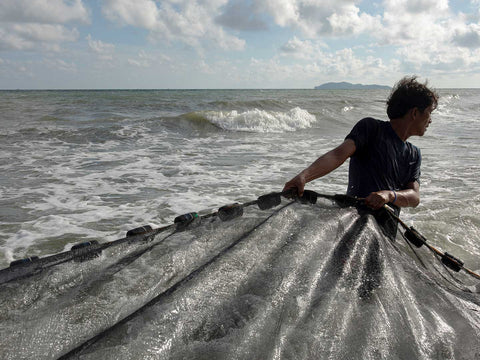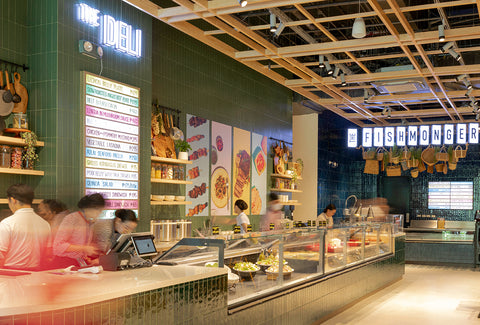Roxas City is known as the Seafood Capital of the Philippines. Located in the province of Capiz, it is home to bustling ports, fishing boats, and fresh seafood restaurants which dot the coastline of its famed BayBay Beach.
At every turn, there are seemingly never-ending heaps of high-quality fish, squid, oysters, mussels, angel-winged clams (diwal), scallops, crabs, and prawns. It is what one can expect from an area blessed with the country’s richest fishing grounds, and many Capiznons pride themselves on the growing, harvesting, preparation techniques, and culinary traditions handed down over generations.
The barangay of Dumolog is said to be home to the highest quality or most guapa (beautiful) variety of boneless dilis. These small fried anchovies, beloved for their salty, satisfying crunch, are one of the many varieties of dried fish produced in this barangay and the most popular variety due to their affordability and availability all year round.
Arriving at the barangay, the first thing you will notice is the rows of carefully laid out fish left out to dry in the sun on handwoven bamboo mats called kapil. The pungent smell of fish will also catch your attention as it evokes a familiar scent regularly enjoyed in Filipino households as dried fish is a staple breakfast dish or pulutan (snack) in drinking sessions.
Capiznons’ dried fish products are naturally cured using traditional methods that have been preserved through time. They also believe that the particular saltiness of the Sibuyan Sea’s waters is what gives their fish its unique flavor. “The taste and quality of our dried fish is really distinct,” Lucille, the daughter of a dried fish farmer shares.
The laborious process starts once the fish is harvested. It will be submerged in saltwater overnight and then washed to remove excess salt and deboned, before moving to the bilaran or drying area, and left to dry in the sun. Drying can take around a day and a half, and the long hours and hard work that goes into the process have earned the laborers (mga nagbibilad) the nickname Pacquiao.

“It’s a dying heritage here in our barangay,” Lucille admits, “even I wasn’t interested in the business at first, because of course, young people want to go to the city or abroad.”
Eventually, she returned to her roots, choosing to keep the legacy of 32 years of her parents’ business alive. Today, she runs the dried fish farm together with her husband, and feels a renewed sense of purpose for the business, supporting the livelihoods not only of her family, but of their staff and community.
For the inhabitants of Dumolog, drying fish isn’t just a business, but a tradition that is baked into the heritage, identity, and community of the town. Lucille says she is happy when she has competitors, because it means that others like her are preserving the artisan way in which they’ve been producing dried seafood for centuries.
“My dream is [for] the products of our barangay to be known not only in the Philippines, but also abroad,” she continues, “Our dried fish is special because of the legend of how we make it… it’s not only from a few years, but generations.”
“We have a saying here that if the dry fish is from Dumolog, it’s really gwapa (beautiful), masarap (tasty), and manamit (delicious),” she says. The room erupts with applause, rooting for the town and its proud specialty, with the hope that more people will come to know, appreciate, and garner the country’s best-quality dilis with the praise it rightly deserves.





